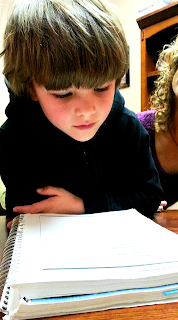 |
| Functioning Fully in Life |
Today I want to look at
the concept of change. Change being ‘something becoming something else’.
Change can be one of the biggest challenges for those with autism as we saw with the little girl in the 'broken cheeseburger' story. However it is an essential part of our daily life, which needs to be understood. Without having the basic understanding of change, there is no foundation to understand before/after/cause and effect and without that we find ourselves with the inability to plan and predict.
Change is a natural law it is something that is around us all the time - it is happening all of the time, whether we are involved in it or not. Can you imagine how chaotic life would seem if you did not have an awareness of this concept? It would feel as if you were living in a random set of events of which you had no control over and no idea of what could happen next or why it happened.
One of the earliest concepts we do in the Davis Autism Approach is to look at change quite simply being ‘something becoming something else’. For example: the burger was whole now it is cut into two pieces, the cup was full and now it is empty; the weather was fine and now it is raining. We explore these ideas by making them in plastalina clay giving a real life example on the table to talk about and explore. Then we can look at it in the environment. At this time we do not explore the how or why it happened, that comes later. Now we just look at change... you will be surprised how simple but powerful this concept can be.
Change can be one of the biggest challenges for those with autism as we saw with the little girl in the 'broken cheeseburger' story. However it is an essential part of our daily life, which needs to be understood. Without having the basic understanding of change, there is no foundation to understand before/after/cause and effect and without that we find ourselves with the inability to plan and predict.
Change is a natural law it is something that is around us all the time - it is happening all of the time, whether we are involved in it or not. Can you imagine how chaotic life would seem if you did not have an awareness of this concept? It would feel as if you were living in a random set of events of which you had no control over and no idea of what could happen next or why it happened.
One of the earliest concepts we do in the Davis Autism Approach is to look at change quite simply being ‘something becoming something else’. For example: the burger was whole now it is cut into two pieces, the cup was full and now it is empty; the weather was fine and now it is raining. We explore these ideas by making them in plastalina clay giving a real life example on the table to talk about and explore. Then we can look at it in the environment. At this time we do not explore the how or why it happened, that comes later. Now we just look at change... you will be surprised how simple but powerful this concept can be.
For more information on functioning fully in life with autism go to www.davisautism.com







